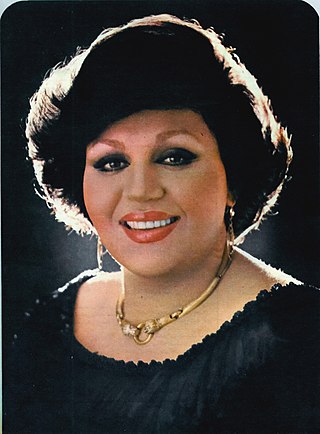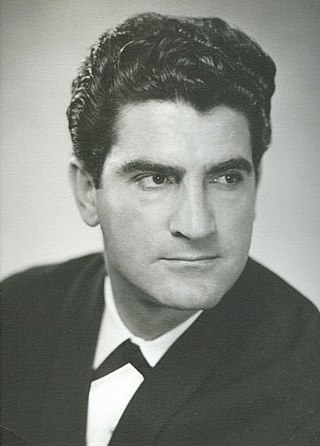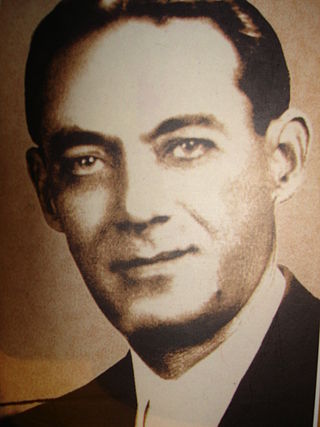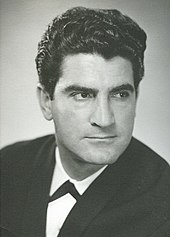
Jazz fusion is a popular music genre that developed in the late 1960s when musicians combined jazz harmony and improvisation with rock music, funk, and rhythm and blues. Electric guitars, amplifiers, and keyboards that were popular in rock and roll started to be used by jazz musicians, particularly those who had grown up listening to rock and roll.

Faegheh Atashin, known professionally as Googoosh, is an Iranian singer and former actress. One of the most popular and prolific entertainers in Iran, her career has spanned over six decades. Googoosh has enjoyed significant popularity since the beginning of her career, ultimately becoming a cultural icon inside Iran and abroad.
The music of Iran encompasses music that is produced by Iranian artists. In addition to the traditional folk and classical genres, it also includes pop and internationally celebrated styles such as jazz, rock, and hip hop.
Persian traditional music or Iranian traditional music, also known as Persian classical music or Iranian classical music, refers to the classical music of Iran. It consists of characteristics developed through the country's classical, medieval, and contemporary eras. It also influenced areas and regions that are considered part of Greater Iran.

Nimā Yushij, also called Nimā (نیما), born Ali Esfandiāri, was an Iranian poet. He is famous for his style of poetry which he popularized, called she'r-e now, also known as She'r-e Nimaa'i in his honour after his death. He is considered as the father of modern Persian poetry.

Ma'soumeh Dadehbala, known professionally as Hayedeh, was an Iranian singer with a contralto vocal range. Known for her wide range of voice, her career spanned over two decades, and she has been widely described as one of the most popular and influential musicians of Iran.

Esmat Bagherpour Baboli, better known as Delkash, was an Iranian diva singer and occasional actress with a rare and unique voice.

Viguen, known as "King of Iranian pop" and the "Sultan of Jazz", was an Iranian pop music singer and actor, well known throughout the Near East. Viguen sang both in Persian and Armenian.

Rahi Mo'ayeri né: Mohammad Hasan Mo'ayyeri, was an Iranian poet and musician.
Iranian pop music or Persian pop music refers to pop music originated in Iran, with songs mainly in Persian and other regional Persian dialects of the country and region.
Iranian rock refers to rock music produced by Iranian artists. Rock music has been popular in Iran since 1960s, with the emergence of singers such as Kourosh Yaghmaei, Farhad Mehrad, Fereydoon Foroughi and Habib Mohebian, but was largely forgotten after the Iranian Revolution. Like most rock styles, electric guitar and bass guitar and drums are the main instruments in this type of music. In some groups, keyboard and piano are very important.

Ebrahim Hamedi, better known by his stage name Ebi (ابی), is an Iranian pop singer who first started his career in Tehran, gaining fame as part of a band, and later as a solo performer. He moved to Los Angeles in 1977, two years before the 1979 revolution in Iran, and continued his career in exile. Over 50 years, Ebi has released nearly 200 singles and over 30 albums.

Esfandiar Monfaredzadeh is an Iranian pioneer film composer, songwriter, and filmmaker. He is recognized for his contribution to film and pop music in Iran. His major works include Qeysar, Toughi, Dash Akol, Tangna, The Deers(Gavaznhā).

Rana Farhan is an Iranian musician and singer of jazz and blues. After graduating from Tehran University, she left Iran in 1989, and has been living in New York since then.
O-Hum is an Iranian rock band from Tehran, Iran, formed in 1998. The band consists of Shahram Sharbaf, Nima Ramezan (guitar), Roozbeh Gholipour, Pouya Shomali (bass), Saman Vandadi.

Sanam Pasha is an Iranian songwriter, vocalist and vocal coach in rock and metal music. As a child, she learned Persian folk music and later went on to learn classical piano, vocals, and solfeggio. She also has an online Masters's certificate in Songwriting and Vocals from the Berklee College of Music. She founded Sanam Pasha, an all-female rock band, in 2012.

Black Cats is a Los Angeles based Persian pop group founded and produced by Shahbal Shabpareh. The band was originally formed in Tehran, Iran in the 1960s and other than Shabpareh, the members have been constantly changing every few years. Some of the most popular members have been Ebi, Hassan Shamaizadeh, Farhad Mehrad, Shabpareh's brother Shahram Shabpareh and Kamran & Hooman.

Moluk Farshforosh Kashani, known as Moluk Zarabi, was a Persian traditional music singer and Actor from Iran.














